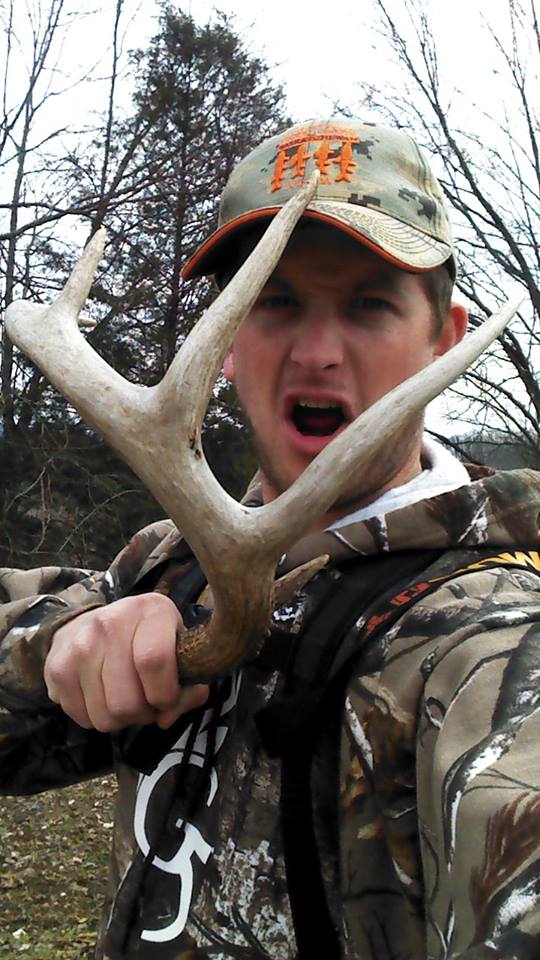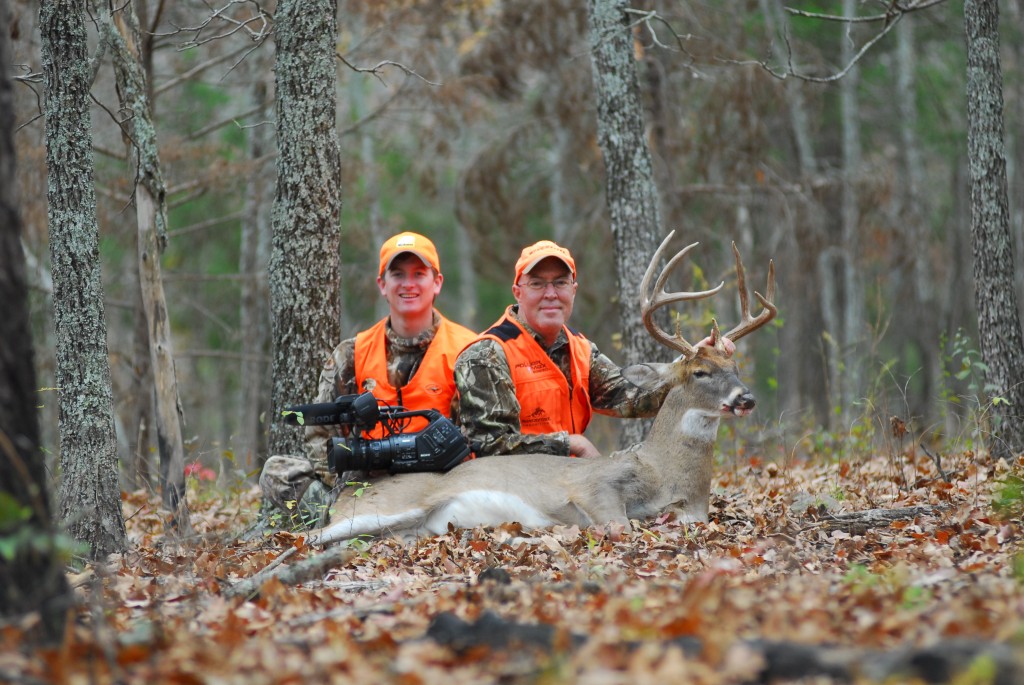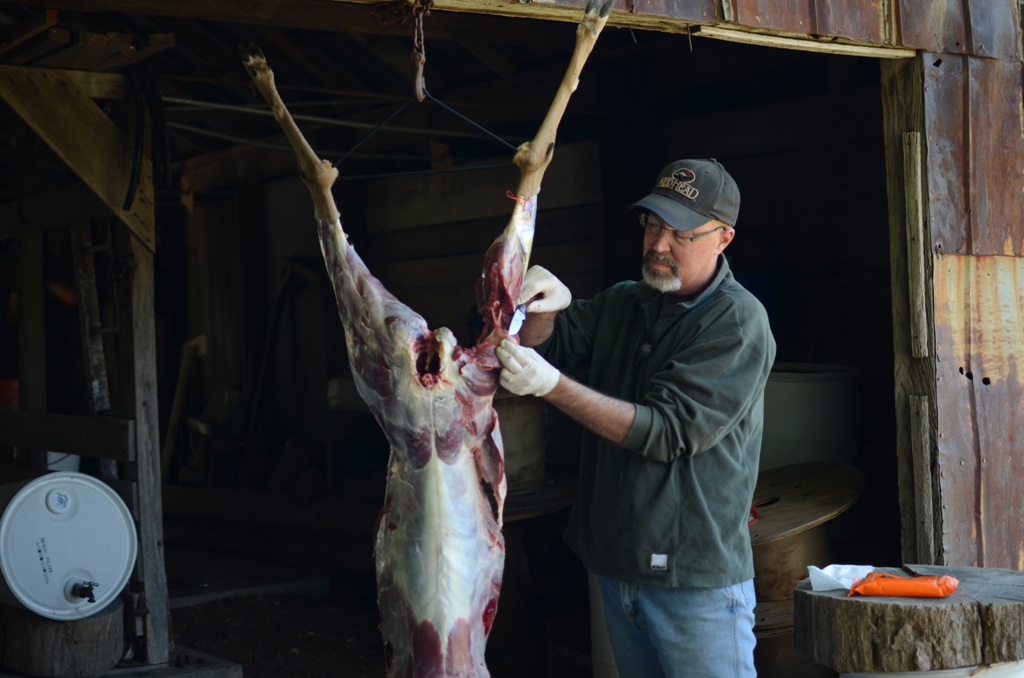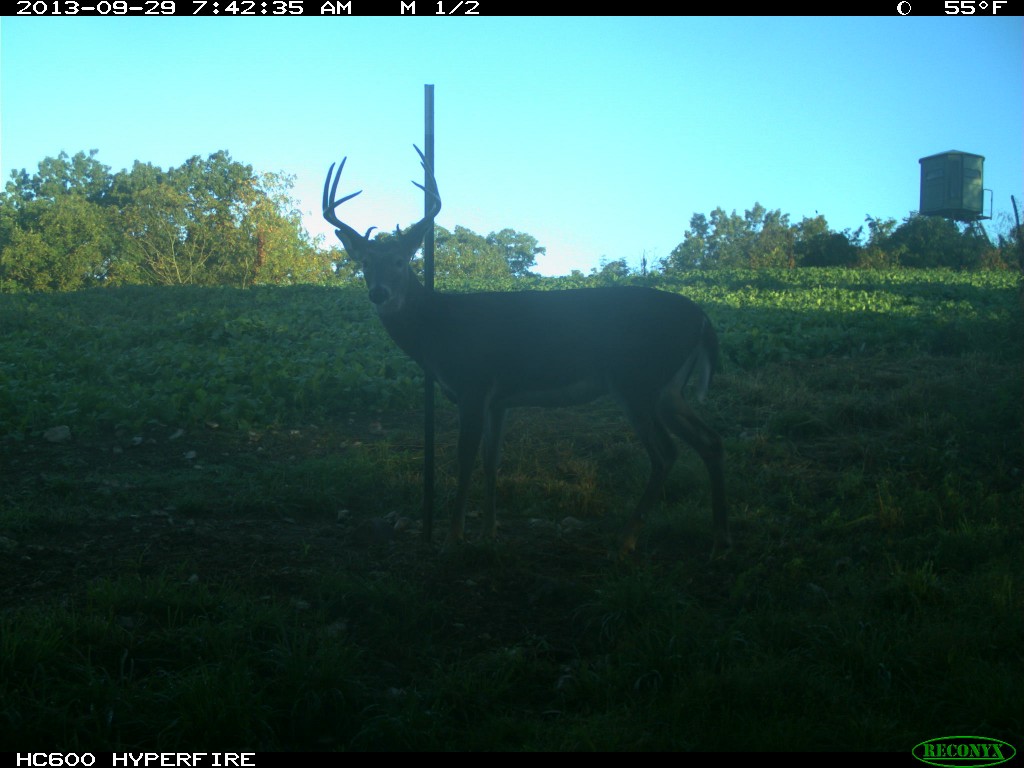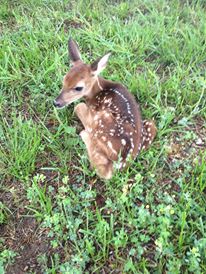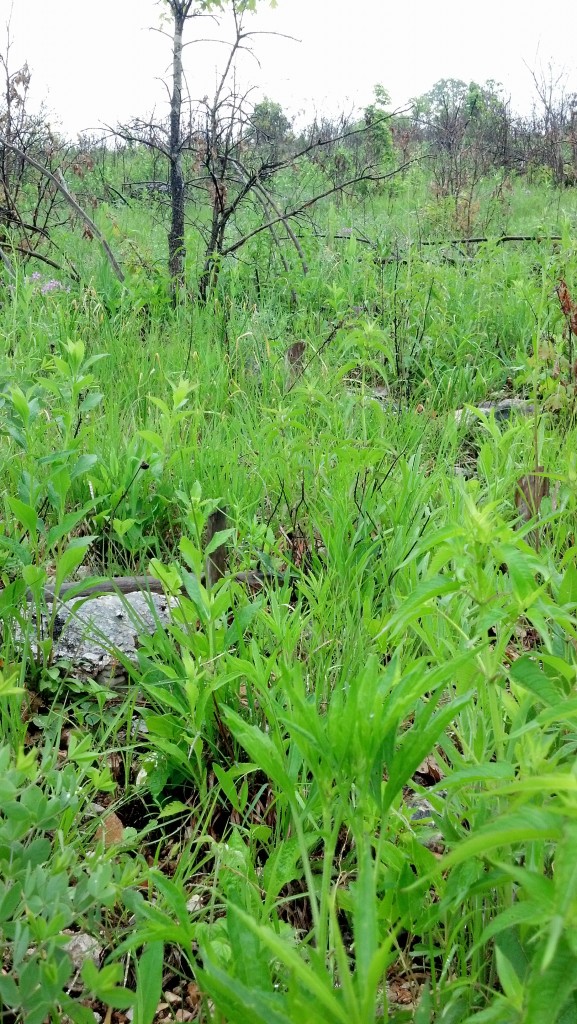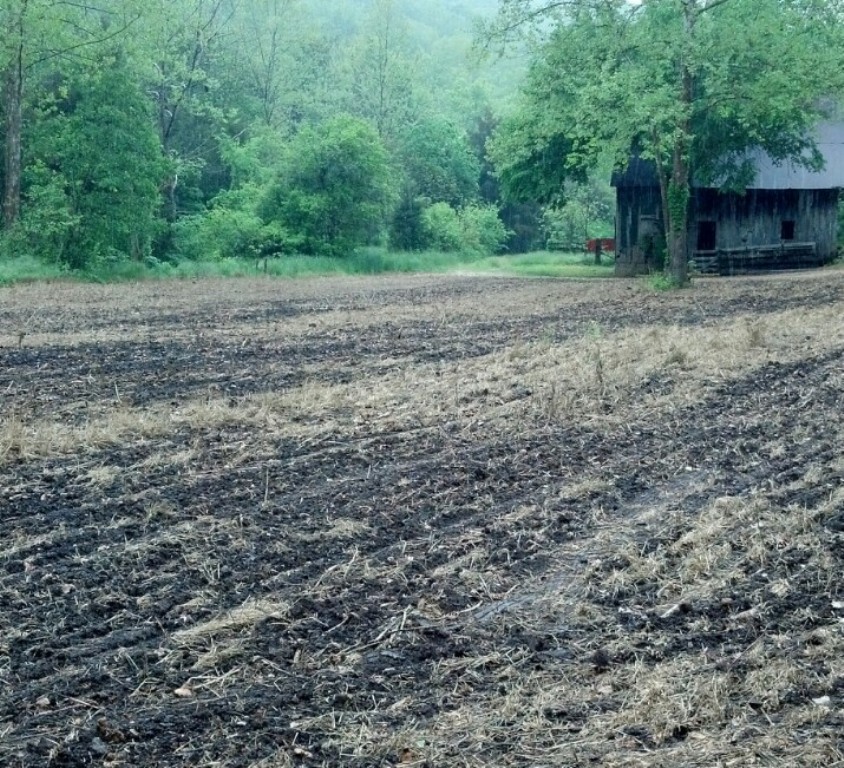Category: White-tailed Deer
Rare Deer? The Piebald Deer
Recently several folks have posted questions and pictures on my Facebook page about deer that are mostly white. These deer have a rare genetic trait that is called piebald anomaly.
Piebald deer usually have between 15 and 90% white hair. They also usually have either or all of the following characteristics: Roman nose, short legs, curving or arching of the spine, short lower jaws, and malformed internal organs. Read More At Winchester.com
Frustrations And Celebrations Of Shed Hunting
I mentioned last week that I was getting cabin fever. That statement holds true for this week as well. February and the beginning weeks of March send me into a serious boredom. Hunting and trapping have ended here in Missouri and turkey season, along with the best fishing days, are weeks and even months away. With all this being said, there is one thing that a guy can pursue to try and relieve his cabin fever: shed hunting!
By this time of year here in the Midwest, a lot of bucks have shed their antlers. It’s always an enjoyment to monitor the Reconyx cameras and see when most of the bucks have started shedding their antlers. As soon as we see that the majority of bucks have shed their antlers, we head to the woods to try and find them! Unfortunately, finding these antlers can be very difficult, excluding the areas of large crop fields like Iowa and Illinois. Growing up in the Ozark Mountains, I’ve found less than twenty sheds my entire life. While I attended college my brother and I would head to Kansas every spring and chase turkeys. Just in those few days every spring, we found more sheds than our entire lives in the Ozark Mountains. What was the difference you ask? FOOD! FOOD! And more FOOD!
Obviously the winter months are cold, and like this year, there can be lots of snow. These conditions push deer to food sources. A deer has only one option to survive the arctic temperatures of winter, and that’s to eat. By consuming food they will increase their body temperature so they can survive the cold days of winter. While deer are focused on feeding to survive, they’re making our job as shed hunters easier. With the deer confined to smaller areas of feeding and bedding, they’re shrinking the circle in which they’ll drop their antlers in. Locating that food source is what we struggle with here in the Ozark Mountains. That food source might be a half acre food plot or a five hundred acre forest with acorns. Lucky for me, Magellan, a 4.5 year old buck here at The Proving Grounds decided this week that the food source of choice was a food plot planted in Eagle Seed Broadside blend. While doing some work beside this food plot I was keeping my eyes peeled for sheds and found his left antler laying ten yards from the edge of the woods. Bingo! It’s always exciting finding sheds but it’s even more rewarding finding them in the Ozark Mountains! They come with such rarity that it’s such a reward!
This find illustrates my main point even further. Once we’ve reached the latter part of the winter months, deer will be concentrated more heavily on food sources. That’s exactly where you’ll find me while I’m searching for those mysterious antlers that haunt our dreams.
Get out this week and help your cabin fever by doing a little shed hunting! We love seeing those pictures with smiling faces holding shed antlers on our Facebook page! Be sure to share them with us!
Daydreaming of whitetails,
Adam
All Signals Go: Time To Hunt The Rut!
It’s that time of year again, the season that every whitetail hunter has laid in bed and dreamed about for the last twelve months. It’s the rut! Hunters wait all year for this magic time of chasing whitetails, but how do we confirm it’s really here?
I spent the day yesterday checking Reconyx trail cameras in preparation for hunting the rifle season this weekend. While out I made a few key observations about the stage of the rut.
I noticed that not a single scrape that we have been monitoring showed any signs of recent use. Falling leaves had covered them. This indicated that the majority of the does are now receptive and bucks no longer need to check scrapes to determine the status of deer in the area. Receptive does are emitting enough scent that the bucks know the status of does and spend their time seeking and tending receptive does versus checking scrapes.
Secondly, I observed three different sets of fawns without a mature doe nearby. When does begin to be harassed by bucks they often leave their fawns for 24-48 hours and seek thick cover in hopes of avoiding aggressive bucks.
These and more signs all indicate it’s currently the lockdown phase of the rut in the Ozark Mountains. If that’s the case where you hunt, I suggest finding some thick cover in hopes of catching that big buck searching for a receptive doe. That’s where the GrowingDeer.tv Team will be hunting! Hopefully things turn out like the rifle opener two years ago (watch GDTV #104 here) when Grant and Adam had success out of a Redneck Blind using this strategy.
Chasing Whitetails Together,
Brian
The Rut Switch
I’ve heard from hunters throughout most of the whitetail’s range this week and most of them are asking “When will the rut start?”
The rut doesn’t simply “start.” There will be a few does that become receptive then more and more will become receptive. Almost all bucks sense the coming surge of does becoming receptive, probably through pheromones deposited by does at scrapes and simply throughout does daily activities.
Bucks become aggressive toward other bucks and tend to spend a bit more time checking areas where does are or have been before most does are receptive. However, this heightened buck activity can occur mostly during the hours of darkness.
This is because fear/survival is still the primary motivation for mature bucks. It’s not until bucks are pursuing a receptive doe or several does in the area are receptive and bucks are aggressively seeking a receptive doe (the area is full of the pheromones produced by receptive does) that bucks become less cautious and tend to alter the time and locations of their activity patterns that makes them more visible than other times throughout the year.
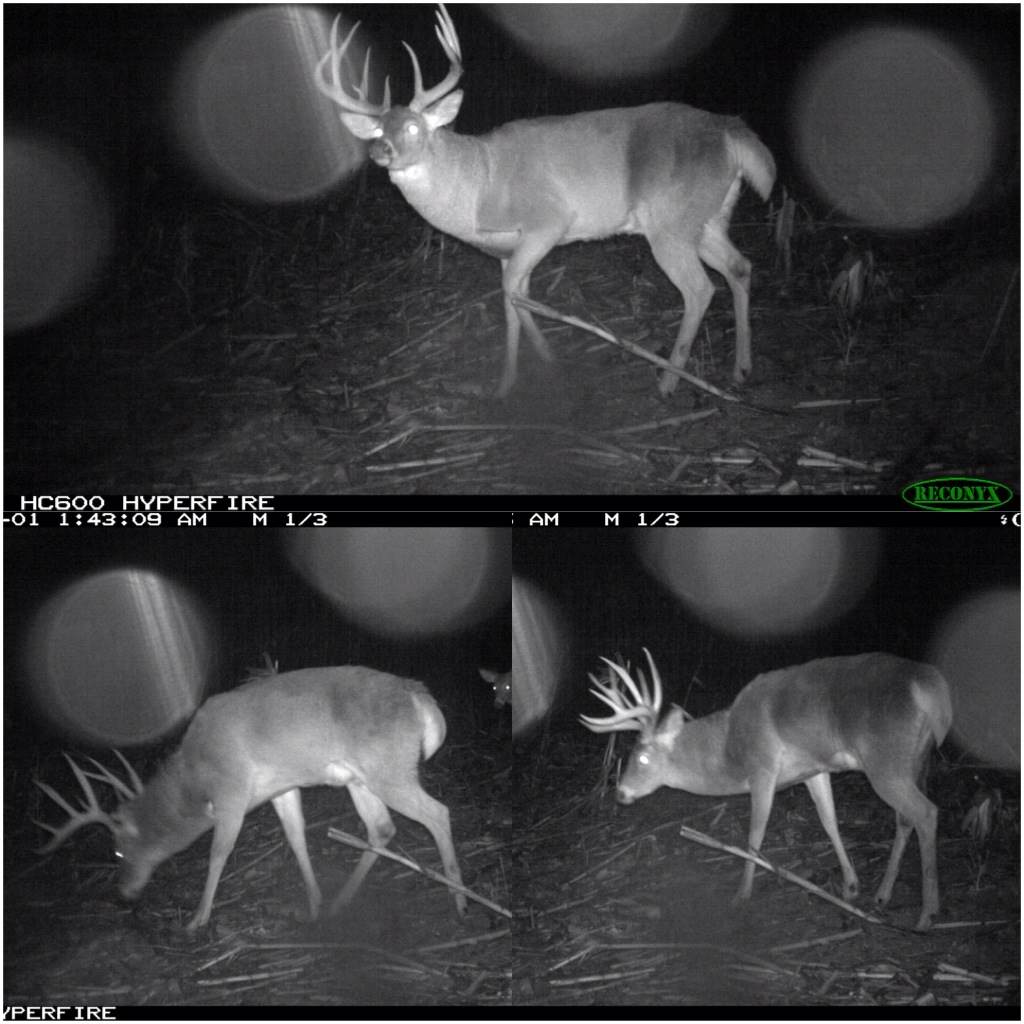
Heightened buck activity can occur mostly during the hours of darkness because fear/survival is still their primary motivation.
This change of focusing primarily on survival and moving primarily at night to aggressively seeking does throughout the day can occur within a few days. This is especially true if the adult sex ratio is close to being balanced (1 adult buck to 1 adult doe).
Usually the tighter the adult sex ratio (even to the point of being skewed toward bucks) the earlier during the year increased daytime activity of bucks will occur and the more intense the rutting action. This simply appears to be due to increased competition for does.
I’ve hunted herds with an adult sex ratio skewed toward does (true for most whitetail herds due to over harvest of immature bucks and lack of doe harvest) and herds that were managed for a balanced or even skewed toward bucks adult sex ratio. There’s no comparison of the pre rut and rut action experienced by hunters between the two differently managed herds.
Hunters that have worked to achieve a balanced adult sex ratio (they’ve passed immature bucks and harvested ample does) are rewarded with the opportunity to experience intense rutting action and herds that respond well to calls, decoys, etc.
This hunting season don’t simply wish you could experience hunts like you watch on hunting shows. Consider the adult sex ratio where you hunt and if it’s skewed toward does, do your part and bring home some tenderloin from a doe and pass those immature bucks that seem to always offer a shot. You’ll be amazed at how good the hunting can be anywhere in the whitetails’ range if the herd is managed properly.
Growing and hunting deer together,
Grant
Deer Hunting Benefits: Healthy Meat
I really enjoy antlers. I think this is natural. The number of antlers painted on caves, cliffs, etc., around the world seems to support that man has always enjoyed antlers!
It’s important to remember that the meat and not the antlers is what sustained those folks that drew antlers on the caves and cliffs 1,000’s of years ago. My family consumes 10+ deer a year – mainly does. My entire family helps in the process of obtaining and preparing venison. Both of my daughters, Raleigh and Rae (ages 14 and 11) hunt. Tracy, my wife, helps process the venison.
We skin, debone, trim off all connective tissue, remove lymph nodes, etc., and then use a vacuum sealer to package the meat before placing it in the freezer.
IF you have any doubt about the quality of venison, the Mayo Clinic says…
“In general, wild game is leaner than domesticated animals, because animals in the wild are typically more active. In comparison to lean cuts of beef and pork, game meat has about one-third fewer calories (game birds have about half the calories) and quite a bit less saturated and total fat. Cholesterol for wild and domestic meat ranges from 50 to 75 milligrams for a 3-ounce serving — with wild game tending to be in the lower end of the range.”
I enjoy improving the habitat on my farm and helping others improve their wildlife habitat and hunting by sharing tips and techniques on GrowingDeer.tv. I really enjoy antlers and managing to allow bucks to live to maturity and express most of their antler growth potential.
Even during prime hunting I rarely pass a doe unless there’s plenty of venison in our freezer as the real reason I hunt is to provide for my family while enjoying and partaking in Creation through an activity that’s as old as the drawings on caves and cliffs around the world.
What’s in your freezer?
Growing Deer together,
Grant
Deer Hunting: Estimating A Buck’s Age
I’ve received tons of requests to estimate the age of bucks on the GrowingDeer.tv Facebook page recently. It seems one of the toughest bucks to accurately estimate the age of is a 3 ½ year old. On most properties a 3 ½ year old buck appears more mature than most bucks. There will always be some natural mortality– so there will usually be fewer 3 year olds than bucks that are 1 ½ or 2 ½. The shoulders of three year old bucks often appear much more developed than younger bucks.
Another complicating factor is that typically 3 ½ year old bucks have expressed approximately 75% of their antler growth potential. So they are carrying a nice rack! All the above factors make it easy to overestimate the age of 3 ½ year old bucks.
When evaluating a camera survey or – even more importantly – when making a shoot or don’t shoot decision while hunting (Watch GDTV #103), I try to focus on body characteristics and not the antlers. I look to see if the buck’s back is straight or bowed (like an old saddle horse). A straight back is an indication that the buck is 3 ½ years old or younger. Likewise I look at his belly. A flat, tight belly is another sign the buck is 3 ½ or younger.
Bucks that are 4 years old or older often have a distinct hump over their shoulders. Three year old bucks can look like they have a hump over their shoulder in some postures – but 4 year old and older bucks almost always appear to have a hump over their shoulders in all postures.
Finally, I imagine placing a 2” x 4” tucked tight right behind their front legs and under their chest. Think of this as a balance rod. If the buck obviously tilts toward his rear, he’s most likely 2 years old or younger. If he balances on the 2” x 4” he’s probably 3 ½ years old. If the buck has the shape of a buffalo and would tip toward his head he’s most likely 4 years old or older.
The 2” x 4” technique of aging deer on the hoof has worked very well for me. I hope you have an opportunity to try it from a stand soon!
Growing Deer together,
Grant
Whitetail Bucks In Summer Velvet: How Big Will He Be?
I receive a lot of questions this time of year about what percentage of a buck’s antlers have been produced to date. The questions are usually phrased “Will the antlers double in size between now and when the velvet sheds?” or “Will he grow more points and tine length before hunting season?”
These are great questions and they are difficult to answer with certainty! First, bucks are unique individuals just like humans. Some folks seem to grow a bunch early during their life while others have a growth spurt later. Some bucks will show a lot of antler growth early while others seem to add a bunch to their rack during July.
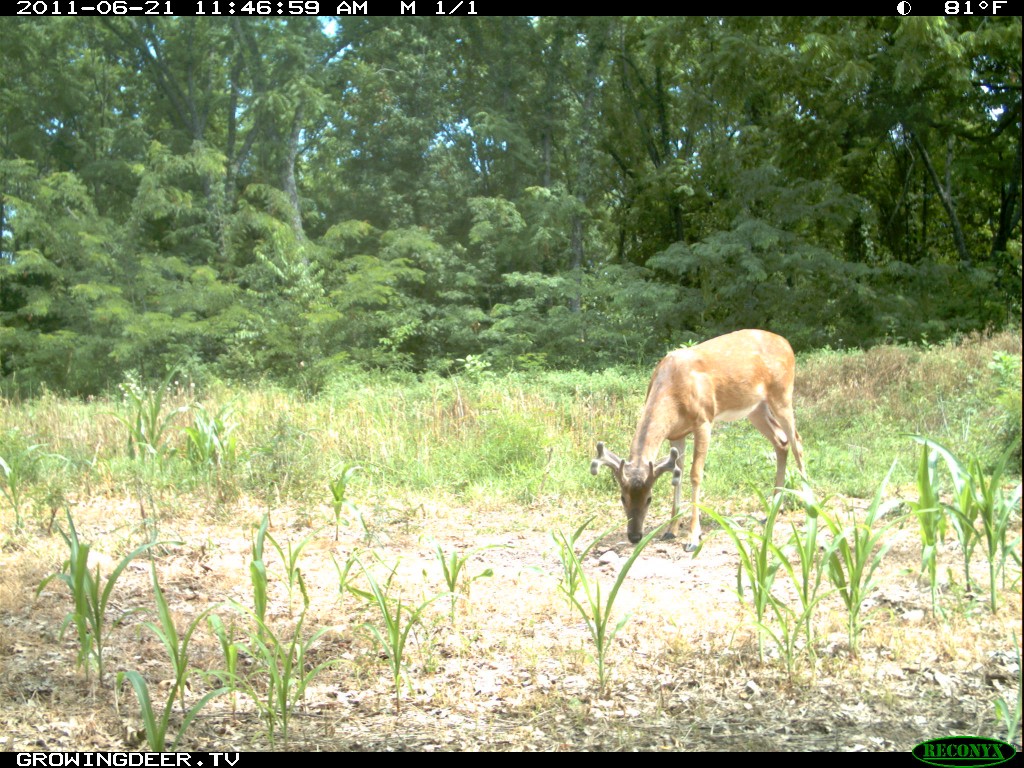
Scouting for bucks in mid June is a great way to estimate the quality of bucks that will be in the area when season opens!
Bucks will have most of their beam length developed by this week. Most of their points will be showing by mid June. Some bucks will have all points showing and some will add a few points. However, tine length is likely to be less than half developed at this time. That’s a big factor as tine length usually makes up about 40% of total gross score!
Mid June is a good time to begin scouting for mature bucks. I use both my Reconyx trail cameras and Nikon binos! Remember that mature bucks clearly have some level of memory. Therefore make sure to use good scent control techniques when checking trail cameras this time of year! The guys and I here at The Proving Grounds use Dead Down Wind. It’s based on safe enzymes – not harmful bactericides like most other products on the market. The best time to check your trail cameras is the middle of the day when deer are most likely to be bedded down.
We are seeing lots of daylight deer activity right now at The Proving Grounds. Deer are hitting our food plots hard in the early morning and late afternoon. We’ve been excited to see a good number of fawns and a significant number of velvet antlered bucks. Remember that antlers in velvet look much larger than what you will actually see this fall.
Scouting for bucks is a great way to estimate the quality of bucks that will be in the area when season opens!
Growing and hunting deer together,
Grant
What To Do When You Find A White-tailed Fawn
Have you ever found a fawn? This is the time of year throughout most of the whitetail’s range that fawns are born! Does typically have fawns in areas of low cover if such habitat is available. This includes areas where turkey hunters might expect to see late season toms trolling for hens. Good turkey nesting habitat is usually good fawning habitat. If such cover isn’t available in an area, does will fawn in fields, yards, along trails, etc.
These are areas that folks frequent and therefore find fawns. I receive a lot of questions each spring about what to do if a fawn is found. Rarely will the doe be seen near the fawn so it’s a logical assumption that the fawn has been abandoned.
That’s rarely the case! Does leave their fawns for hours at a time and only return to the fawn to allow them to nurse during the first few weeks after giving birth. This reduces the amount of scent and movement around the newborn fawns and scientists assume this serves to reduce predation of fawns.
If you find a fawn, snap a quick picture if you please and then simply leave the area. The doe may be watching you, but will rarely show herself. Your scent could serve to attract predators so do the same as the doe and leave the area.
It’s illegal in most states to possess wild, free-ranging living wildlife. In addition, fawns do best when they can feed on their mother’s milk. If you find a fawn at the edge of your yard, keep your pets penned up and it’s likely the doe will move the fawn soon due to the amount of disturbance in that environment. If you find a fawn away from civilization, simply keep moving.
I really enjoy watching all ages of deer. However, when it comes to newborn fawns, I take a quick look and picture, then back out of the area. That’s the best action that can be taken!
Enjoying Deer together,
Grant
Predicting Antler Growth With A Rain Gauge
Remember the saying “April showers bring May flowers?” Early spring showers bring more than flowers. Early spring showers bring antlers!
There is some neat research in south Texas that monitored the amount of rainfall during the early spring months and the average size of antlers produced by each age class of bucks that fall.
The results clearly demonstrated a positive relationship between spring rainfall and antler growth. The smallest average antler size per age class occurred during the two years that the least amount of rain occurred during the early spring months. The years the average antler size per age class was the largest was when the most rain occurred during the early spring months!
Clearly, ample high quality forage during the first portion of the antler growth cycle is strongly related to antler production during that year! This certainly applies to the Texas example where the majority of the land is covered by native vegetation.
I read a report the other day that only 7% of the corn and soybean crops have been planted due to the fields being too wet. The percent of these crops that are planted is way behind the previous two years. In the corn and soybean belt deer are literally forced to consume these cultivated crops as native vegetation is very rare. It’s the only thing on the menu! A wet spring in the corn belt may have the opposite effect on antler size compared to areas where native vegetation can take advantage of the spring rains.
Deer with the largest antlers and body weights are from areas with ample soybean and corn production. However, if the area where those crops are grown remains bare ground during the early spring, there’s not much for the local deer to eat. In these areas spring showers may have the opposite relationship on average antler size per age class compared to an area with quality native vegetation. 2013 is shaping up to be an interesting year for deer hunters and researchers!
Growing Deer (and learning about them) together,
Grant
Whitetail Management: Stress And Genetic Potential
Removing stress from wildlife allows them to express more of their genetic potential. As managers we don’t improve genetics of free-ranging wild creatures. That requires knowing the pedigree (the sire and dam for several generations) which is totally impractical in free-ranging wild populations.
The best we can do is manage the population and habitat so each individual can express their full genetic potential. For example, a mature buck that’s limited to consuming hardwood twigs and fescue won’t produce as large of antlers or body size as that same buck if it was consuming soybean forage during the summer and soybean pods (and other forages) during the winter.
Managers can reduce the stress deer and other forms of wildlife experience by improving the quality of food, cover, and water and reducing the number of predators (should the predator/prey populations be out of balance). The natural world is dynamic. That is to say the balance of the number of critters in relation to the amount of quality food, cover, water, and predators is always changing!
We’re expecting a significant change later this week at The Proving Grounds. There’s a good chance of snow in the forecast! I heard on the radio that snow hasn’t been recorded in May in my area for more than 100 years. The cold conditions that are associated with this storm will certainly be very stressful for deer that have begun to shed their winter coat and replace it with the shorter, thinner summer coat. Staying warm will cost critters a lot of energy.
There are probably a couple of newly born fawns at my place. Most fawns are born during late May/early June, but there are always those that are born a few weeks earlier or later than “normal.” Freezing wet conditions will make survival very tough on newborn fawns.
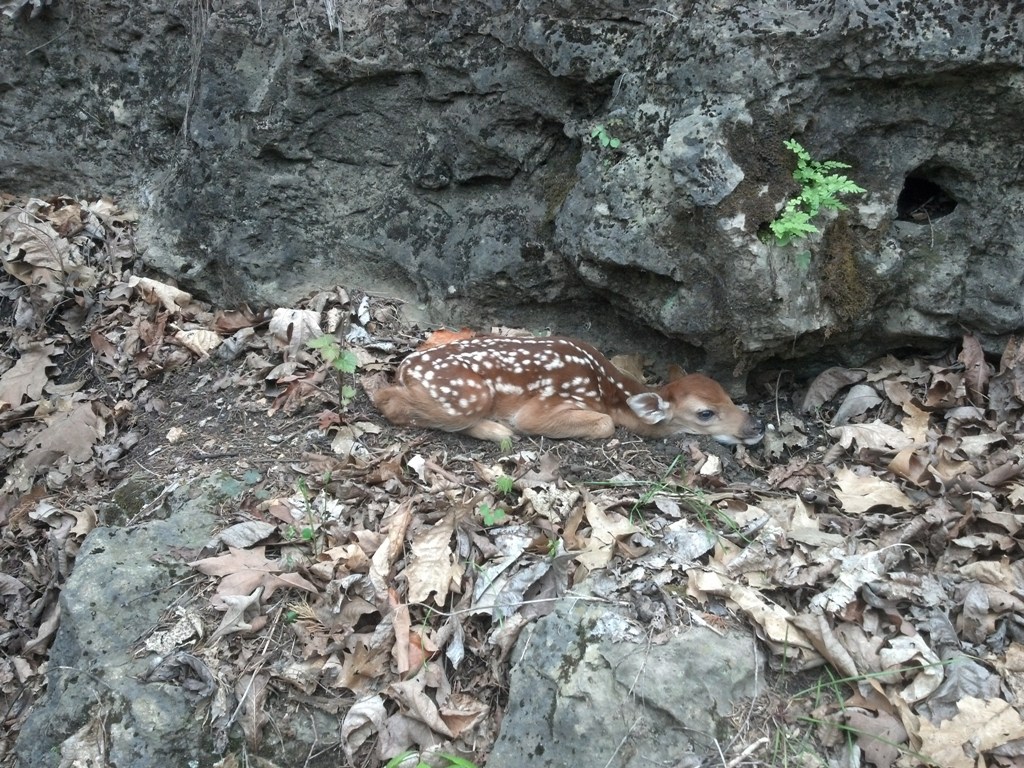
Most fawns are born during late May/early June but there are always those that are born a few weeks earlier or later.
Likewise there are probably a few turkey poults that have hatched already. Cold wet conditions will likely result in a 100% loss of those early born poults.
We can’t change (or even accurately predict) the weather. We can manage the habitat to provide quality food, cover, and water to help wildlife survive such storms. It’s critical to manage the wildlife populations so that there is more food than required during good conditions – as bad conditions will always occur.
We manage for very high quality native forage and cover at The Proving Grounds. There’s plenty to eat, fresh water to drink, and great cover for wildlife to seek during this arctic blast. Such storms have probably occurred before weather records were kept and they’ll probably occur again. That’s why quality habitat management is critical for allowing wild, free-ranging deer to express their potential. As managers, we can have an impact on the habitat quality and the amount of genetic potential the local herd expresses. We can’t impact the genetic quality of wild, free-ranging deer. I’m glad we can’t – that’s what makes them wild!
Growing Deer together,
Grant



